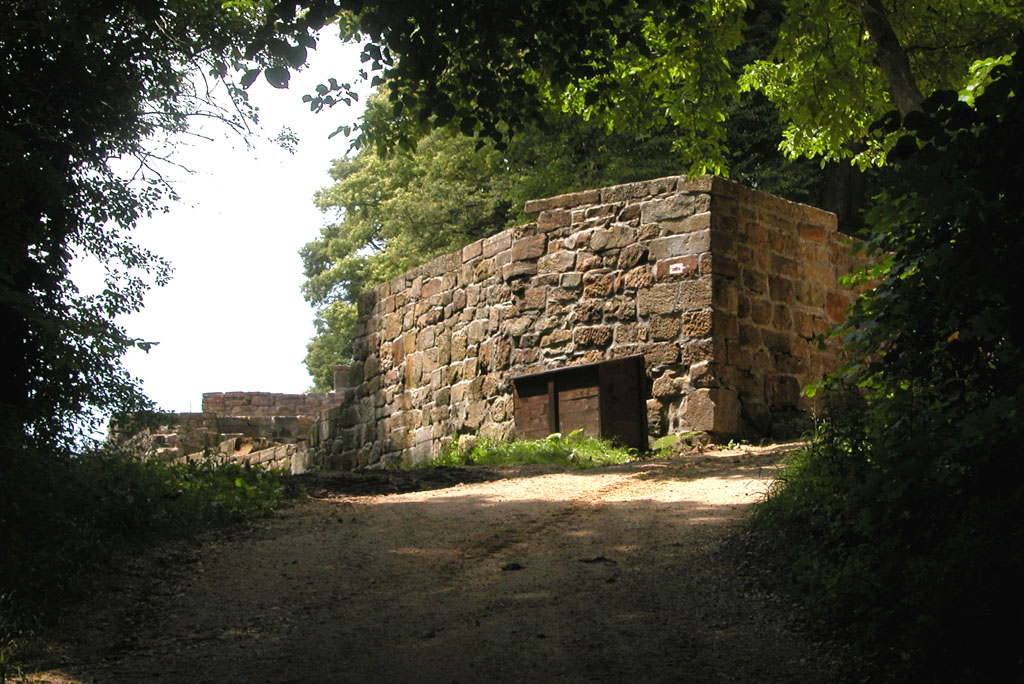|
Maulbronn Monastery
Maulbronn Monastery () is a former Cistercian abbey and ecclesiastical state in the Holy Roman Empire located at Maulbronn, Baden-Württemberg. The monastery complex, one of the best-preserved in Europe, was named a UNESCO World Heritage Site in 1993. The monastery was founded in 1147 and experienced rapid economic and political growth in the 12th century, but then hardship in the late 13th century and the 14th century. Prosperity returned in the 15th century and lasted until Maulbronn was annexed by the Duchy of Württemberg in 1504. Over the 16th century, the Cistercian monastery was dissolved and replaced with a Protestant seminary. It also became the seat of an important administrative district of the Duchy and later Kingdom of Württemberg. The complex, surrounded by turreted walls and a tower gate, today houses the Maulbronn town hall and other administrative offices, and a police station. The monastery itself contains an Evangelical seminary and a boarding school. Hi ... [...More Info...] [...Related Items...] OR: [Wikipedia] [Google] [Baidu] |
Maulbronn
Maulbronn () is a city in the district of Enz in Baden-Württemberg in southern Germany. History Founded in 1838, it emerged from a settlement, built around a monastery, which belonged to the Neckar Community in the Kingdom of Württemberg. In 1886, Maulbronn officially became a German town and was an administrative centre until 1938. The return of many displaced persons following the Second World War significantly raised the local population. Of particular note is the town's monastery, Maulbronn Abbey, which features prominently in Hermann Hesse's novel, '' Beneath the Wheel''. The former Cistercian monastery has been a UNESCO World Heritage Site since 1993. Legend has it that the settlement was founded by monks who followed a mule to a valley with a source of clean water. The valley was also blessed with large deposits of soft sandstone for building. The monks built the original abbey and erected a fountain to honour the mule. The town name means mule fountain. According to ... [...More Info...] [...Related Items...] OR: [Wikipedia] [Google] [Baidu] |
Stromberg (landscape)
The Stromberg () is a heavily forested hill ridge up to in the northern part of the German state of Baden-Württemberg. [Baidu] |
Imperial Abbey
Princely abbeys (, ''Fürststift'') and Imperial abbeys (, ''Reichskloster'', ''Reichsstift'', ''Reichsgotthaus'') were religious establishments within the Holy Roman Empire which enjoyed the status of imperial immediacy (''Reichsunmittelbarkeit'') and therefore were answerable directly to the Emperor. The possession of imperial immediacy came with a unique form of territorial authority known as '' Landeshoheit'', which carried with it nearly all the attributes of sovereignty. Princely abbeys and imperial abbeys The distinction between a princely abbey and an imperial abbey was related to the status of the abbot: while both prince-abbots and the more numerous imperial abbots sat on the ecclesiastical bench of the College of ruling princes of the Imperial Diet, prince-abbots cast an individual vote while imperial abbots cast only a curial (collective) vote alongside his or her fellow imperial abbots and abbesses. Eight princely abbeys (including similar status priories) and ro ... [...More Info...] [...Related Items...] OR: [Wikipedia] [Google] [Baidu] |
Tithes
A tithe (; from Old English: ''teogoþa'' "tenth") is a one-tenth part of something, paid as a contribution to a religious organization or compulsory tax to government. Modern tithes are normally voluntary and paid in cash, cheques or via online giving, whereas historically tithes were required and paid in kind, such as agricultural produce. Church tax linked to the tax system are used in many countries to support their national church. Donations to the church beyond what is owed in the tithe, or by those attending a congregation who are not members or adherents, are known as offerings, and often are designated for specific purposes such as a building program, debt retirement, or mission work. Many Christian denominations hold Jesus taught that tithing must be done in conjunction with a deep concern for "justice, mercy and faithfulness" (cf. Matthew 23:23). Tithing was taught at early Christian church councils, including the Council of Tours in 567, as well as the Third ... [...More Info...] [...Related Items...] OR: [Wikipedia] [Google] [Baidu] |
Schöntal Abbey
Schöntal Abbey () is a former Cistercian abbey in Schöntal in the district of Hohenlohe, Baden-Württemberg, Germany. It is famous as one of the most impressive pieces of Baroque architecture in northern Württemberg and is now used by the Diocese of Rottenburg-Stuttgart as a retreat and training centre. History The Cistercian monastery was founded in 1153 in Neusass by Wolfram von Bebenburg and was settled by monks from Maulbronn Abbey. The original site proved unsuitable and the new community moved to the present location in Schöntal on the Jagst between 1157 and 1163. The land for the new site was provided by the von Berlichingen family in exchange for rights of burial in the monastery. The monastery was under the protection of the Bishops of Würzburg. Despite a promising beginning, the abbey found itself in financial difficulties by the early 13th century. Maulbronn Abbey was also in financial trouble and gave Schöntal to Kaisheim Abbey, which settled its debts ... [...More Info...] [...Related Items...] OR: [Wikipedia] [Google] [Baidu] |
Jus Patronatus
The right of patronage (in Latin ''jus patronatus'' or ''ius patronatus'') in Roman Catholic canon law is a set of rights and obligations of someone, known as the patron in connection with a gift of land (benefice). It is a grant made by the church out of gratitude towards a benefactor. Its counterpart in English law and in the Church of England is called an advowson. The right of patronage is designated in papal letters as ''"ius spirituali annexum"'' and is therefore subject to ecclesiastical legislation and jurisdiction as well as civil laws relating to the ownership of property. Background In the Eastern Catholic Churches, the founder of a church was permitted to nominate an administrator for the temporal goods and indicate to the bishop a cleric suitable for appointment. In the Latin Church, the Synod of Orange in 441 granted a right of "presentation" to a bishop who had built a church in another diocese and the Synod of Toledo in 655 gave a layman this privilege for e ... [...More Info...] [...Related Items...] OR: [Wikipedia] [Google] [Baidu] |
Pope Eugene III
Pope Eugene III (; c. 1080 – 8 July 1153), born Bernardo Pignatelli, or possibly Paganelli, called Bernardo da Pisa, was head of the Catholic Church and ruler of the Papal States from 15 February 1145 to his death in 1153. He was the first Cistercian to become pope. In response to the fall of Edessa to the Muslims in 1144, Eugene proclaimed the Second Crusade. The crusade failed to recapture Edessa, which was the first of many failures by the Christians in the crusades to recapture lands won in the First Crusade. He was beatified in 1872 by Pope Pius IX. Early life Bernardo was born in the vicinity of Pisa. Little is known about his origins and family except that he was son of a certain Godius. From the 16th century he is commonly identified as member of the family of Paganelli di Montemagno, which belonged to the Pisan aristocracy, but this has not been proven and contradicts earlier testimonies that suggest he was a man of rather humble origins. In 1106 he was a canon of t ... [...More Info...] [...Related Items...] OR: [Wikipedia] [Google] [Baidu] |
Hohenstaufen
The Hohenstaufen dynasty (, , ), also known as the Staufer, was a noble family of unclear origin that rose to rule the Duchy of Swabia from 1079, and to royal rule in the Holy Roman Empire during the Middle Ages from 1138 until 1254. The dynasty's most prominent rulers – Frederick I (1155), Henry VI (1191) and Frederick II (1220) – ascended the imperial throne and also reigned over Italy and Burgundy. The non-contemporary name of 'Hohenstaufen' is derived from the family's Hohenstaufen Castle on Hohenstaufen mountain at the northern fringes of the Swabian Jura, near the town of Göppingen. Under Hohenstaufen rule, the Holy Roman Empire reached its greatest territorial extent from 1155 to 1268. Name The name Hohenstaufen was first used in the 14th century to distinguish the 'high' (''hohen'') conical hill named Staufen in the Swabian Jura (in the district of Göppingen) from the village of the same name in the valley below. The new name was applied to the hill c ... [...More Info...] [...Related Items...] OR: [Wikipedia] [Google] [Baidu] |
Archbishop Of Trier
The Diocese of Trier (), in English historically also known as ''Treves'' () from French ''Trèves'', is a Latin Church ecclesiastical territory or diocese of the Catholic church in Germany."Diocese of Trier" '' Catholic-Hierarchy.org''. David M. Cheney. Retrieved February 29, 2016"Diocese of Trier" ''GCatholic.org''. Gabriel Chow. Retrieved February 29, 2016 When it was the archbishopric and , it was ... [...More Info...] [...Related Items...] OR: [Wikipedia] [Google] [Baidu] |
Arnold I Of Vaucourt
Arnold I of Vaucourt (, ) (''circa'' 1120 – May 25, 1183 in Trier), was the Archbishop of Trier from 1169 to 1183. He took a pro- Imperial position in the Investiture Controversy of the twelfth century. As archbishop, Arnold was accounted a capable ruler, by turns thrifty and generous, with a genuine concern for his church and his domain.''ADB'', Vol. 1, p. 579. Born into the Rhenish nobility of the upper Lorraine (probably in Vaucourt, near Lunéville in the modern French ''département'' of Meurthe-et-Moselle), Arnold was most likely the child of the Lord (''Seigneur, Ritter'') Wirich of Vaucourt (the founder of a (no longer extant) Cistercian abbey at Freistroff and builder of the Château Saint-Sixte), and thus related to several celebrated personalities of the time (''e.g.'' Hildegard of Bingen, with whom Arnold corresponded). He was a ''capitular'' (member of the chapter) of the cathedral of Trier and Provost of St. Andrew's Church in Köln, later becoming a cano ... [...More Info...] [...Related Items...] OR: [Wikipedia] [Google] [Baidu] |
Bad Cannstatt
Bad Cannstatt (), also called Cannstatt (until July 23, 1933) or Kannstadt (until 1900), is one of the outer Stadtbezirke, or city boroughs, of Stuttgart in Baden-Württemberg, Germany. Bad Cannstatt is the oldest and most populous of Stuttgart's boroughs, and one of the most historically significant towns in the area of Stuttgart. The town is home to the Cannstatter Wasen and Cannstatter Volksfest beer festivals, the MHPArena (VfB Stuttgart), the Hanns-Martin-Schleyer-Halle, and the Porsche-Arena. Name Bad Cannstatt's name originates from a ''Castra stativa'', Cannstatt Castrum, the massive Roman Castra that was erected on the hilly ridge in AD 90 to protect the valuable river crossing and local trade. In the past, Bad Cannstatt has been known as simply Cannstatt or ''Kannstatt'', ''Cannstadt'', ''Canstatt'', ''Kanstatt'', and ''Condistat''. Its name was changed to include "''Bad''" () to mention the town's spas on 23 July 1933. History Bad Cannstatt lies on the N ... [...More Info...] [...Related Items...] OR: [Wikipedia] [Google] [Baidu] |
Speyer
Speyer (, older spelling ; ; ), historically known in English as Spires, is a city in Rhineland-Palatinate in the western part of the Germany, Federal Republic of Germany with approximately 50,000 inhabitants. Located on the left bank of the river Rhine, Speyer lies south of Ludwigshafen and Mannheim, and south-west of Heidelberg. Founded by the Ancient Rome, ancient Romans as a fortified town on the northeast frontiers of their Roman Empire, it is one of Germany's oldest cities. Speyer Cathedral, a number of other churches, and the ("old gate") dominate the Speyer landscape. In the cathedral, beneath the high altar, are the tombs of eight Holy Roman Emperors and List of German monarchs, German kings. The city is famous for the 1529 Protestation at Speyer. One of the ShUM-cities which formed the cultural center of Jewish life in Europe during the Middle Ages, Medieval / Middle Ages, Speyer and its Jewish courtyard, Speyer, Jewish courtyard was inscribed on the UNESCO (United ... [...More Info...] [...Related Items...] OR: [Wikipedia] [Google] [Baidu] |







